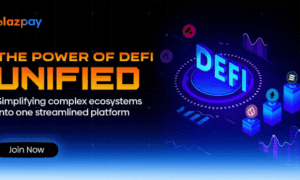In today’s fintech world, an idea is just the beginning. But to turn it into your first million dollars (or the equivalent in other currencies), you need more than just vision and inspiration, but also an infrastructure that allows you to quickly and flexibly implement your idea. This is where a white label crowdfunding platform and other ready-made technology solutions come into play: tools that you can adapt to your goals, brand, and regulatory requirements.
What is White Label in the Context of Crowdfunding and Why Is It Important
White label platforms are software that already has all the basic elements for launching a crowdfunding platform: user registration, investor participation, payment processing, application management, legal mechanisms, etc. However, it is provided in such a way that the company can “brand itself”, make the interface, conditions, model according to its needs.
The advantages of this approach are obvious:
- Quick start — instead of developing a platform from scratch, which can take months and a large budget, white label solutions allow you to enter the market in weeks or several months.
- Minimum technical risk — ready-made functionality, tested software, support, and updates.
- Compatibility with regulations — many white label providers already take into account the necessary legislative and regulatory standards for different countries, which simplifies legalization.
- Focus on business strategy — instead of spending resources on technical aspects, entrepreneurs can focus on marketing, selecting partners, building a community, and attracting investors.
How White Label Solutions Help You Cross the “First Million” Threshold
When everything is set up correctly, white labels allow you to focus on three main growth drivers:
- Product and market: Quickly testing ideas on the market without large capital investments. For example, you can launch an MVP (minimum viable product), see the reaction of investors or sponsors, make adjustments. This allows you to avoid spending on something that does not work properly or is not needed by the audience.
- Expansion of functions: When the basic platform works stably, new capabilities are added, such as investment models, types of financing (equity, P2P lending, real estate investment, social projects), integrations with payment systems, KYC/AML, tokenization, etc. This allows you to attract more categories of investors and different use cases.
- Optimization of operations and costs: White label technologies are already honed, their support and scaling are cheaper than custom development. The time spent on administration, maintenance, and security is reduced. This contributes to greater margins, meaning that when costs are kept under control, the first real profit becomes achievable sooner.
Challenges and How to Overcome Them
Even with white label solutions, not everything is easy. There are a number of challenges:
- Legal and regulatory aspects. Rules for crowdfunding, investments and financial platforms vary in different countries. Licensing, reporting obligations, investor protection requirements need to be taken into account. The white label provider must be able to adapt the platform to local standards.
- Investor and brand trust. Precisely because you are using a ready-made platform, it is important that the brand and UX are professional, so that users see that the platform is reliable, secure, and that there will be no problems with data and funds.
- Competition. As the barrier to entry decreases, the number of platforms that “do the same thing” increases. To stand out, you need to have a clear niche, value proposition, focus on unique users or regional needs.
- Technical limitations and customization. The basic white label version has standardized functionality, but for special needs (e.g., integrations with special systems, support for cryptocurrencies or tokens, or very specific legal forms) additional customization may be required.
Step by Step: How to Turn an Idea into a Platform Business to the First Million
1) Idea formulation and niche
Choose a segment: equity, P2P, real estate, impact investments, etc. Think about the local market: what startups, projects, or businesses are looking for investors, what are the pain points of investors. This will help to create a unique offer.
2) Technology assessment and supplier selection
Research existing white label solutions: check the functionality, what integrations are available, whether it is supported by regulators, how easy it is to customize for your country or specifics. Compare, for example, LenderKit with other options in terms of launch speed, customization options, customer support.
3) Legal framework
Determine the legal form, disclosure requirements, licensing, reporting, investor rights protection. If using a white label, make sure that the supplier already has experience in configuring the platform to such legal standards in similar countries.
4) Launching an MVP
Don’t try to make the “perfect” platform with all the features right away. Launch a basic version: registration, project page, investment mechanics, KYC verification, payments. Use those features that will allow you to test the brand, UX, marketing, and investor attraction.
5) Marketing and user growth
Crowdfunding is not just a technology, but a community. You need to build trust, demonstrate cases, do content marketing, PR, and use social media. Investors need to see that the platform works transparently, and that projects are carefully selected.
6) Scaling and expanding functions
After the user base is formed and there are stable projects, you can invest in advanced functionality: analytics, automatic reports, asset tokenization, new financial products. This allows you to increase the average check and attract larger investors.
7) Monetization and cost control
Sources of income can be different: commission from projects, investor participation fees, user subscriptions, premium options. It is important to control operating costs: support, technical security, compliance with standards, as these costs must be provided for in the business model.
Conclusion
White label crowdfunding solutions are a real game changer for those looking to get to market quickly, with less risk, and with a focus on strategic growth. They allow you to go from idea to commercial success much more efficiently than traditional development from scratch.
Companies that choose this path, for example with solutions like LenderKit, get the opportunity not only to start quickly, but also to scale the business, adapt it to the markets, attract investors, and build trust from the moment of launch. If you approach it with understanding, with a well-thought-out niche, a carefully selected technology partner, and an adequate growth strategy, the first million is not just a goal, but a logical consequence.

































